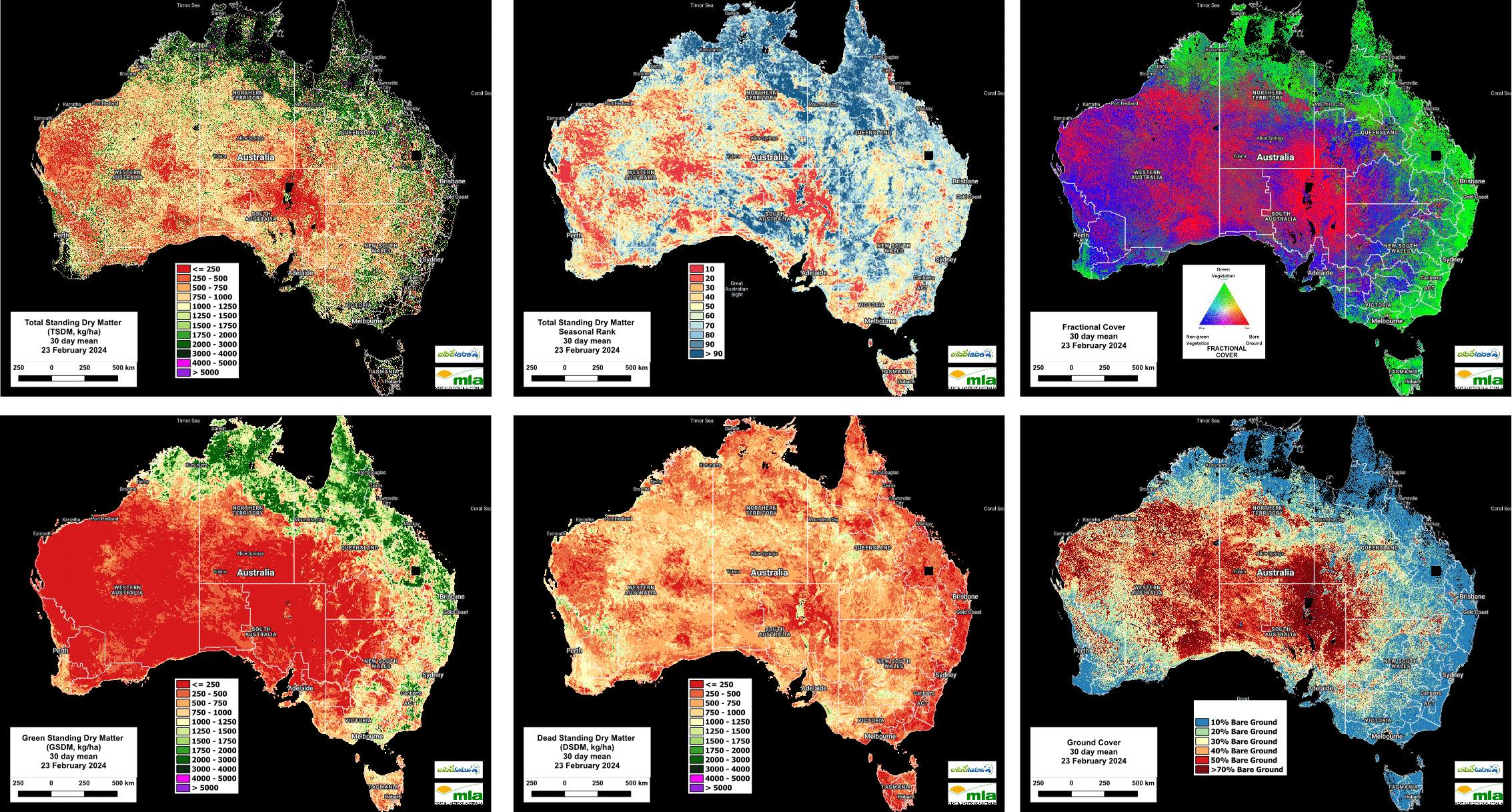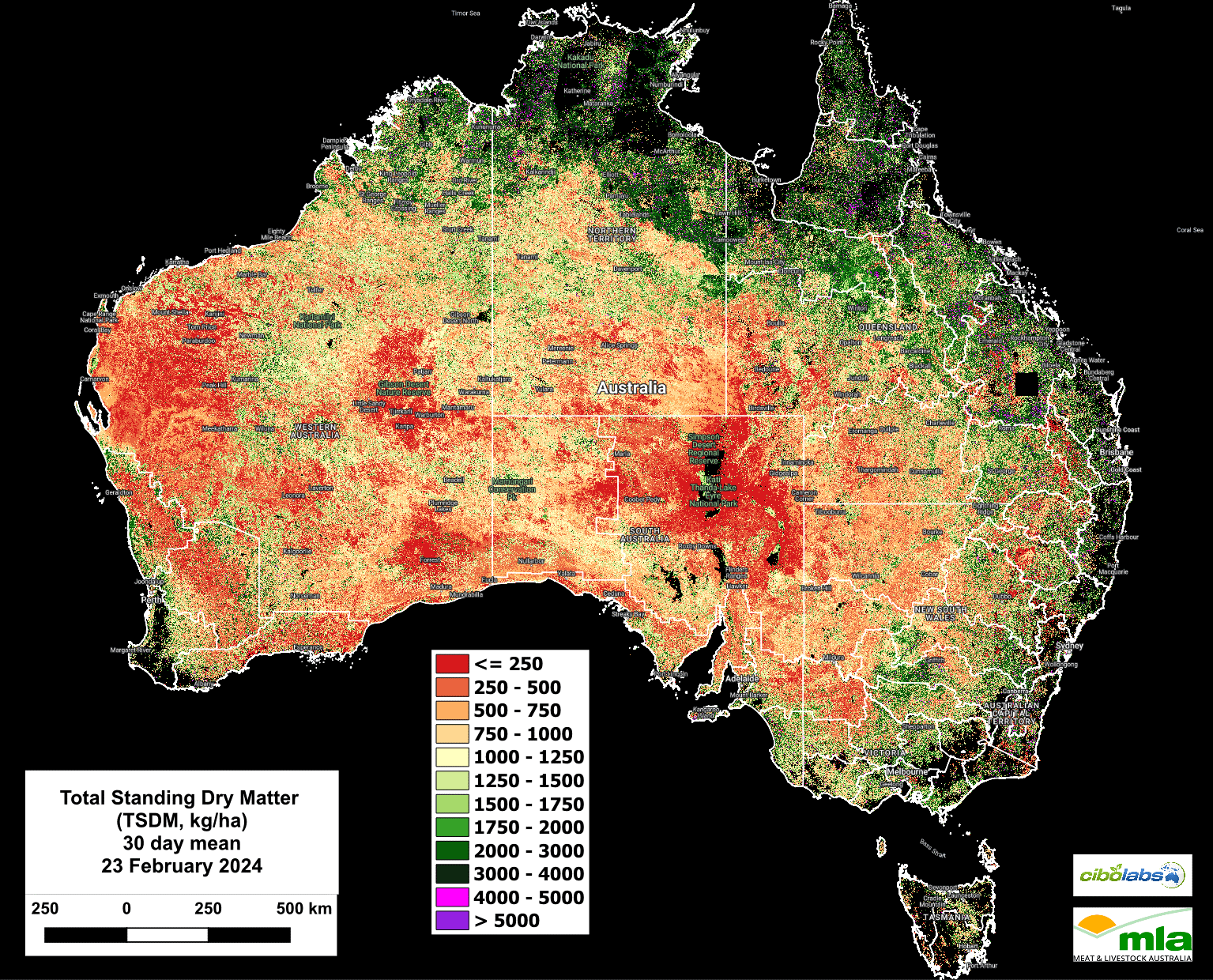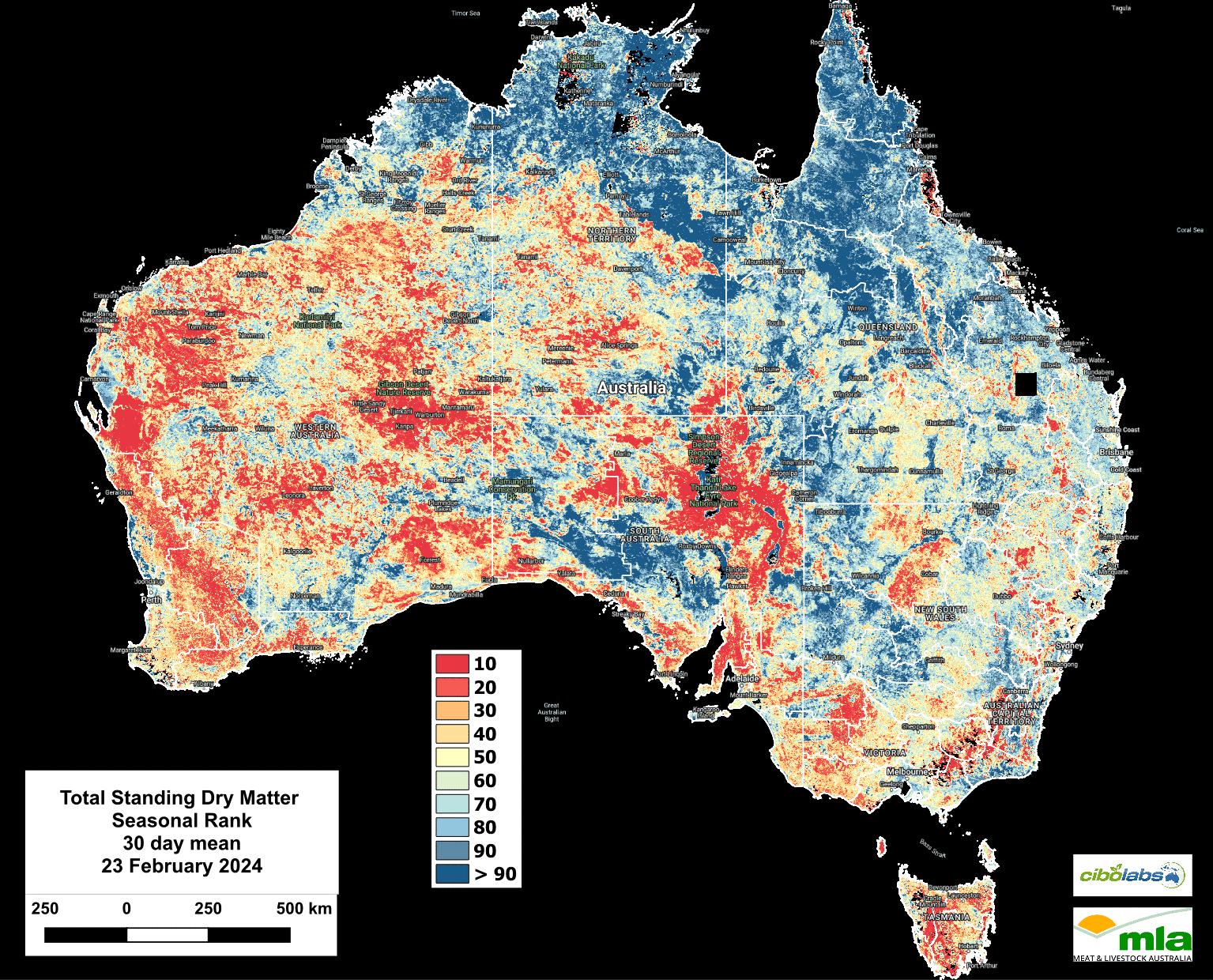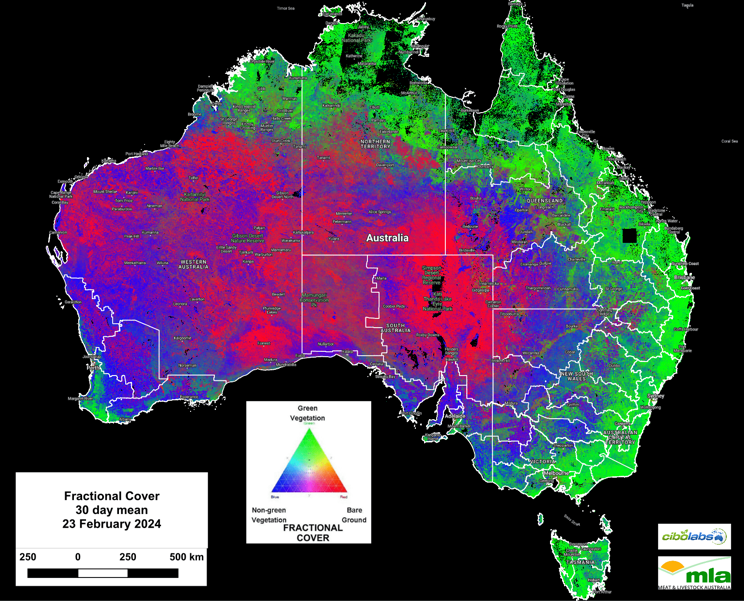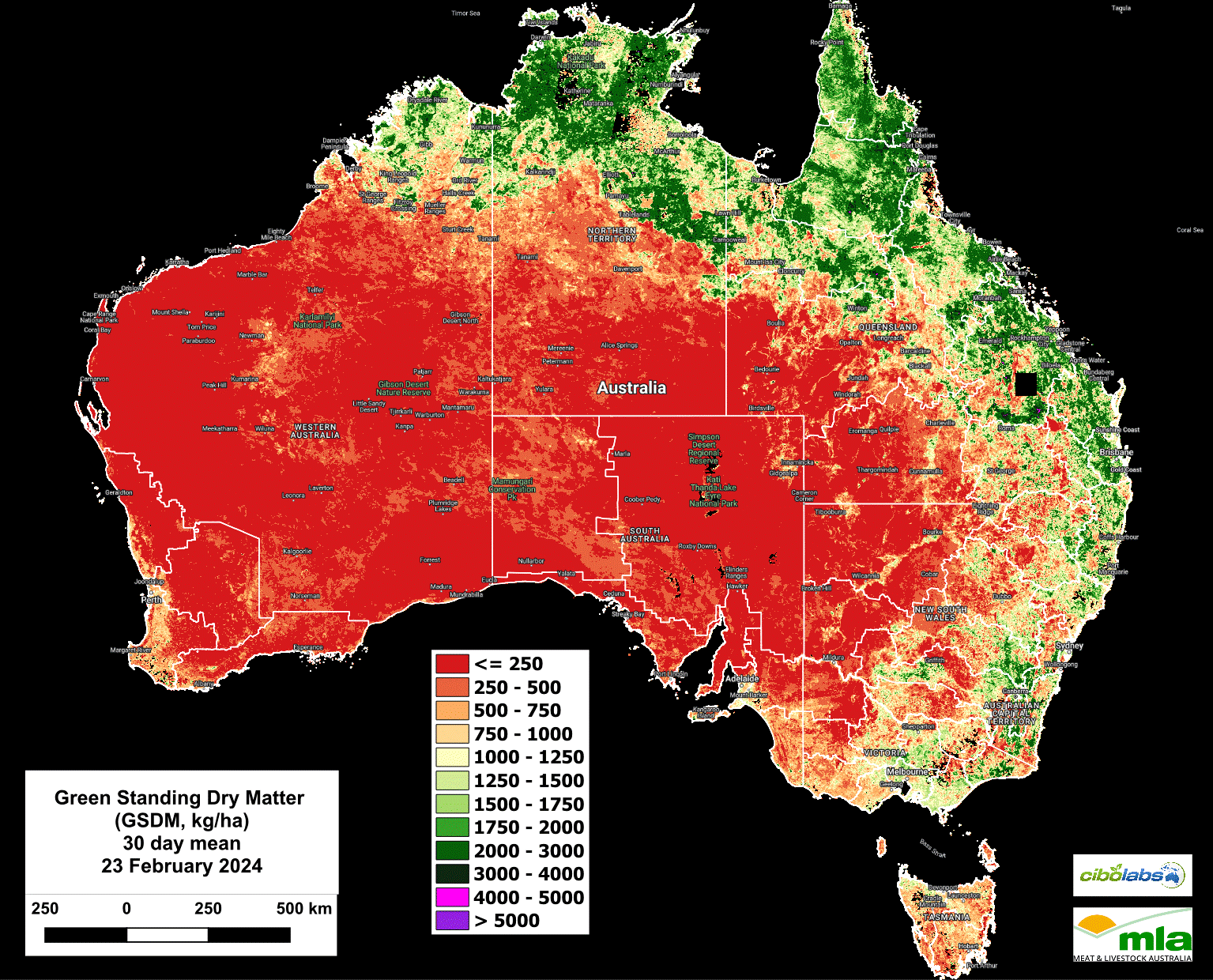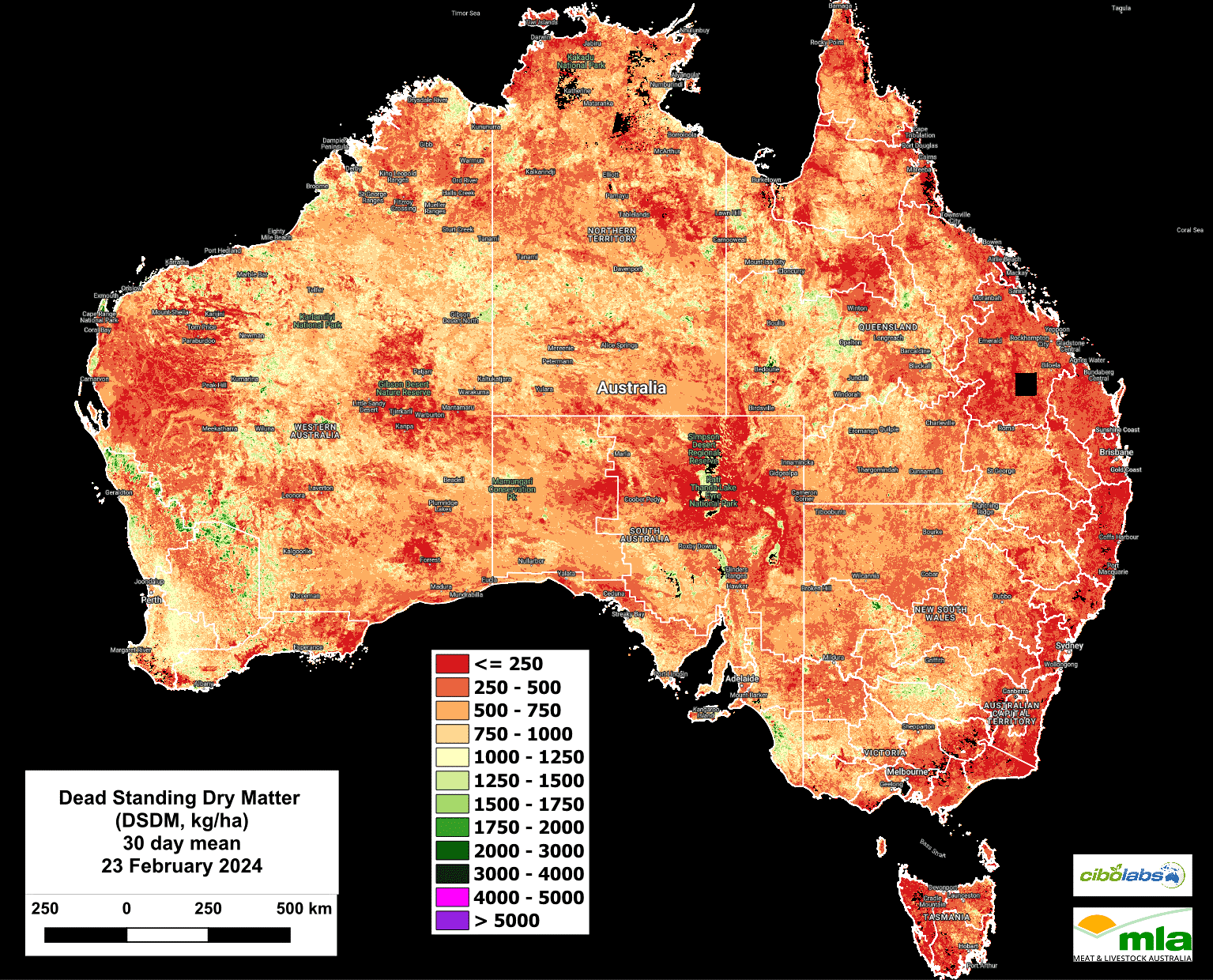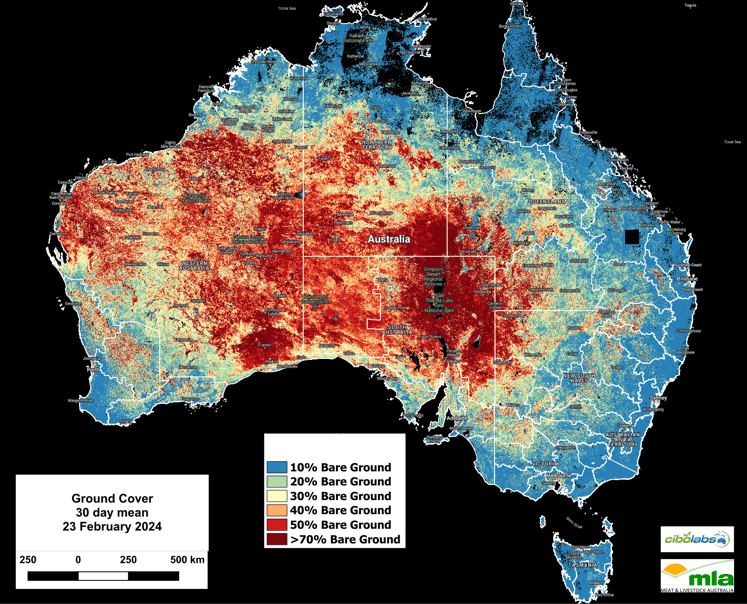NATIONALLY, there has been a gradual improvement in Total Standing Dry Matter levels in the past two weeks.
The impact of flooding and ongoing weather events in northern Australia has not only influenced biomass levels in the Gulf region of Queensland, but also further downstream as runoff and flooding impacts biomass levels.

Imagery and analysis provided by CiboLabs
Total Standing Dry Matter
Observations of Total Standing Dry Matter, measured in Kg/Ha, show northwest Queensland, and the northern areas of the Northern Territory and Kimberley region in Western Australia to have maintained or increased total amounts.
This reflects the impact of going conditions as part of the wet season and recent weather events.
Southern states, including Victoria, Tasmania and New South Wales show no significant changes at state levels to TSDM amounts.
Seasonal Comparison Total Standing Dry Matter
The gradual improvement in TSDM levels nationally is reflected in the current seasonal rankings.
This image shows conditions against the average of the past eight years.
As expected, the areas of Northern Australia most impacted by seasonal and weather events are now experiencing seasonal conditions well above the average.
There has also been improvement in western NSW, where conditions are better than the eight-year average.
However western Victoria, Tasmania and southeast South Australia still record seasonal conditions that are just below or well below the average.
Conditions in Western Australia remain largely unchanged in the last two weeks. (Figure 2).
Fractional Cover (Growth)
Active herbage growth observed by Fractional cover (Image 3) reflects the response to wetter conditions as a result of recent flooding and wet season events in northern Australia.
The extent of growth south of Mt Isa, Winton & Cloncurry is noticeable, as are some early responses to floodwaters heading towards the Channel country.
Eastern Australia still shows large areas of active growth, even in states such as Tasmania that have recorded low levels of Total Standing Dry Matter.
Green Total Standing Dry Matter
Green Standing dry matter levels remain very high in Queensland east of a line running from St George to Barcaldine and northwest to Camooweal.
Similarly in NSW, east of a line running from Tenterfield southwest to Dubbo and Wagga Wagga has levels of Green Standing Dry Matter above an average of 1200Kg/DM/Ha.
This line extends into Victoria with the Gippsland region displaying the highest levels of Green Standing Dry matter in the state.
The western states have very low levels of green standing dry matter (Image 4).
Dead Standing Dry Matter
Dead Standing Dry Matter remains largely unchanged in all states with levels of Dead Standing Dr Matter to be at or below 500kg/DM/Ha (Image 5)
Monthly Ground Cover levels
National Ground Cover levels (30-day rolling average – Image 6) also remain largely unchanged in the last two weeks.
For more localised information including regional level overviews, users are encouraged to explore the Cibo Labs Regional Comparison. This tool provides regional data that may show the impact of localised weather or fire events. A further level of detail for individual properties is available for users who have created an Australian Feedbase Monitor account, which can be accessed both through the MyMLA portal or through the Cibo Labs website.
The Cibo Labs National Comparison can be used to freely access these layers (https://www.cibolabs.com.au/products/national-comparsion/) to view the most recent images from a national, state or catchment level.
This tool can complement the Australian Feedbase Monitor which can also be created within the Cibo Labs Web Site www.cibolabs.com.au

